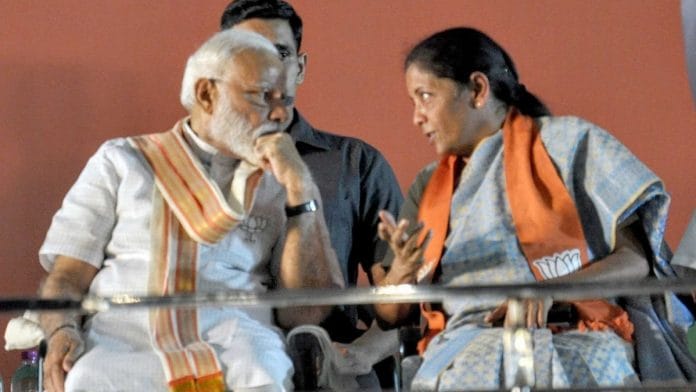Singapore: Equity strategists and economists are concerned that Prime Minister Narendra Modi’s $265 billion stimulus to cushion the economy during the coronavirus pandemic has focused on boosting liquidity rather than demand in the fragile economy.
Almost half of the rescue package — equivalent to 10% of gross domestic product — comprises monetary measures announced since February, while Finance Minister Nirmala Sitharaman on Wednesday offered $72 billion in credit lines to small firms, shadow banks and electricity distributors.
Equity futures on India’s NSE Nifty 50 Index traded in Singapore dropped 1.5% Thursday after stocks in Asia’s third-largest economy jumped the most in almost two weeks in the previous day’s session on optimism about the rescue package.
Also read:Rs 20 lakh cr can reboot economy, add jobs, tackle climate change. If there’s political will
Here’s what equity analysts and economists are saying about India’s stimulus:
No Major Demand Boost
Surendra Goyal and Vijit Jain, equity analysts at Citigroup Inc.:
“There was no major demand boost yet, which equity markets were hoping for – maintain our Nifty target of 10k.”
The Finance Minister’s announcements on Wednesday “set focus on relief for India’s MSME sector, NBFCs and Utilities, mainly -– “liquidity being the focus.”
Not a 1991 Moment
Kunal Kundu, an economist at Societe Generale SA:
“Expectations were high that it could be this government’s 1991 moment, when the economic crisis of that time triggered a major reform push that ultimately set the economy on a new growth trajectory.” Kundu said while a few more announcements are likely to follow, the “multiple liquidity measures and barely any additional fiscal spend” fell short of expectations.
“Not addressing the needs of the most vulnerable sections of the society, i.e. the migrant labourers and employees of the unorganised sector, will likely prolong the economic pain, delay the recovery of aggregate demand and could potentially worsen the labor-supply situation.”
Looking for More Balance
Mahesh Nandurkar and Abhinav Sinha, equity analysts at Jefferies Financial Group Inc.:
“Tranche 1 of the new Govt package has successfully postponed a large part of potential NPLs from MSME and NBFC segments from FY21 to FY22 with minimal impact to FY21 fiscal.”
“More demand side measures will likely be announced over the next couple of days, which reduces the market downside risk.”
Joseph Thomas, head of research at Emkay Wealth Management:
“The measures are more of supply side and there is very little that is on the demand side. Probably, future announcements may contain a more balanced coverage of demand and supply side factors.”
“Demand side factors generally tend to work faster as it is oriented toward the consuming unit directly.”- Bloomberg
Also read:Indian economy seen contracting 0.4% in 2020-21 under Covid impact, Bloomberg survey shows






